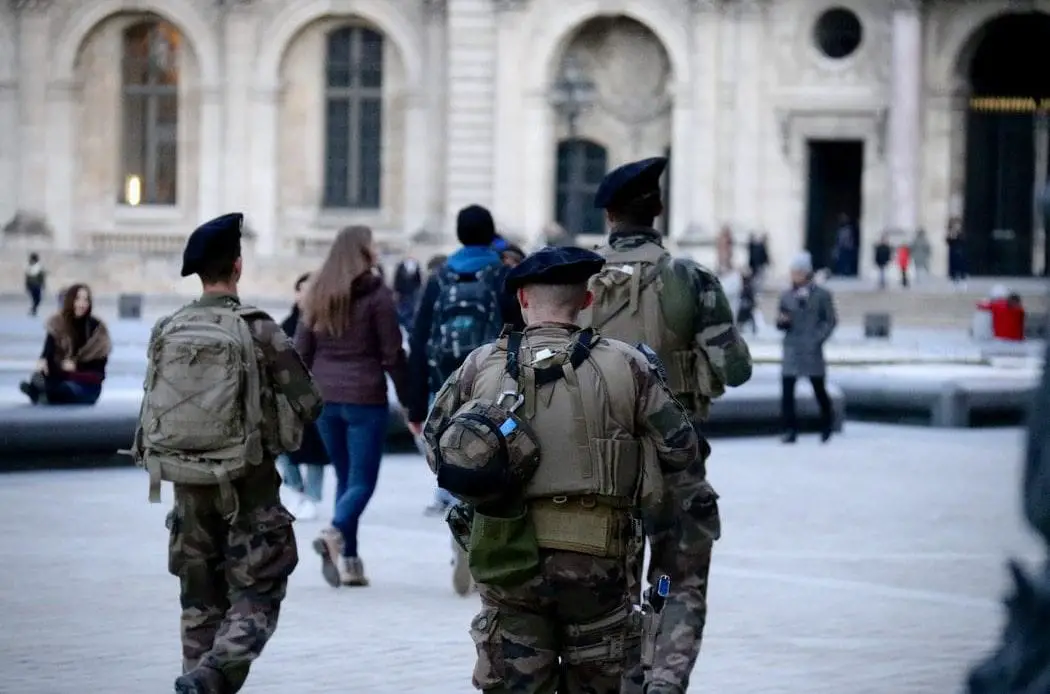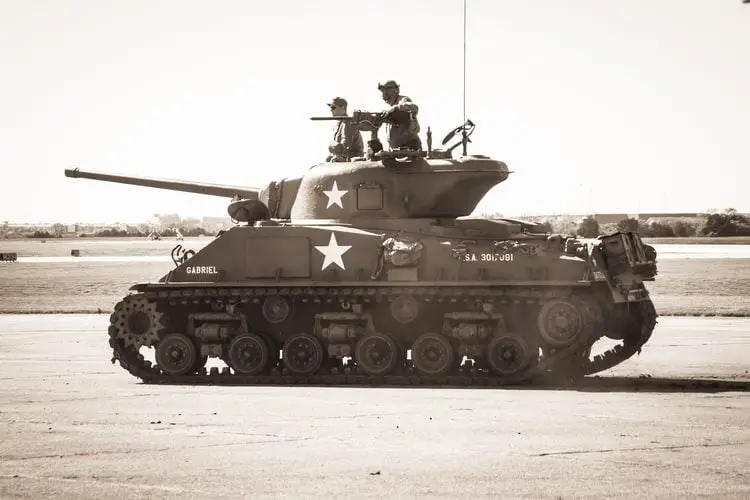
Historical Facts about Military Lettering
Long-distance communication before World War I was quite difficult or impossible in those days. It became a possibility only after the new development of the voice supported two-way radio on a long-distance telephone network. To improve on the quality of communication in long-distance transmissions and for clarity of the alphabets in oral communication, telephone spelling alphabets were developed. The telephone alphabet is a set of words that is meant to stand for the letters of an alphabet in oral communication. This mode of communication is also called as a phonetic alphabet by amateur radio enthusiasts.
The Military Phonetic Alphabets
The Military phonetic alphabets were officially adopted to use only in World War II even though it was recognized as a long-distance oral communication tool in 1927. The U.S. military adopted its version of the Joint Army/Navy Radiotelephony alphabet to standardize internal communications in the year 1941. During World War II, many nations developed their own versions of the military phonetic alphabets for use. The U.S. military had adopted a standard communication system with their version of the alphabet, which was also embraced by the Royal Air Force.
The U.S military version of the phonetic alphabet was later called Able Baker from the letters ‘A’ & ‘B’. The Abel Baker alphabet was, however, modified in 1943 in streamlining communication between the allied nations comprising the U.S., the U.K., and the Australian Armed forces.
The Abel Baker alphabet was again modified post World War II as other nations had difficulty understand it as the alphabet sound favored English speaking nations. Speakers from 31 nations speaking different languages were later involved in creating a revised universal alphabet which helped in serving English, French, Spanish & other languages.
International Radiotelephony Spelling Alphabet (IRSA)
The revised universal military alphabet was finalized in 1957, often referred to as the Military Phonetic Alphabet or military lettering in military terms. World over it is now officially called as International Radiotelephony Spelling Alphabet (IRSA). This alphabet was developed by the International Civil Aviation Organization (ICAO) & currently being used by all members of NATO. In the present IRSA, only four words from the Abel Baker alphabet remain and they are Charlie, Mike, Victor, & X-Ray.
The military phonetic alphabet makes use of 26 code words to signify each letter of the alphabet. It is quite commonly used by the military & civilians, especially radio enthusiasts, for error-free spelling by phone. The military also communicates through slangs, code, & short-codes.
Uses of Military Lettering in Missions
Many letters like ‘M’ & ‘N’ or ‘B’ & ‘D’, of the English language sound quite similar. The Military Phonetic Alphabet is an important way of secretly communicating to members about mission status, locations & other related information. A simple example would be: if directed to ‘muster at building DMG’ would become ‘muster at building Delta-Mike-Golf’ in Military Phonetic Alphabet. The way of relaying messages varied with the military operation where a squadron, after completing a phase of a mission, would report back as ‘Alpha’, the first word in the alphabet. The second phase would be ‘Bravo’ & the alphabet ’Oscar Mike’ to convey that the team has started moving. Also, there are different forms of communication in the Armed Forces in Military Phonetic Alphabet, like the Naval saying ‘Bravo Zulu’, meaning ‘well done’ on completing a mission. These are some of the examples of military lettering in missions.
The Military Phonetic Alphabet is an alphabet where each letter has a code word that begins with that letter. For example, the letter ‘B’ would stand for ‘Bravo’ & the letter ‘P’ stand for the word ‘Papa’.
IRSA or the NATO Phonetic Alphabet
Today the NATO phonetic alphabet is the most commonly used phonetic alphabet using a standard set of code-words referring to the letters in the English alphabet. The NATO phonetic alphabet has become a very useful communication tool as it helps you communicate effectively in precarious situations. The NATO phonetic alphabets is a very simple concept & very easy to learn.
The International Radiotelephony Spelling Alphabet (IRSA), commonly known as the NATO phonetic alphabet, or also termed as Military Lettering in military terms, is due to the 26 letters of the English alphabet. The 26 letters of the English alphabet in alphabetical order are 26 code-words beginning with that alphabet. Beginning with the alphabet ‘A’ the code words start with A for Alfa. Then other alphabets: Bravo, Charlie, Delta, Echo, Foxtrot, Golf, Hotel, India, Juliett, Kilo, Lima, Mike, November, Oscar, Papa, Quebec, Romeo, Sierra, Tango, Uniform, Victor, Whiskey, X-ray, Yankee & Zulu.
Let us try to understand how to use the NATO phonetic alphabet in everyday situations.
How Does a Phonetic Alphabet Work?
To create a phonetic alphabet, replace the letter in mind with a word beginning with the same letter. Example:
· C replaced by Charlie
· B replaced by Bravo
· G replaced by Golf.
Some phonetic alphabets have code words revolving around a specific place or a country or other factors. Sometimes the phonetic alphabet code-words are structured intelligently to be understood by the others especially in adverse conditions.
The Use of Phonetic Alphabet
Bad phone or a bad connection leading to bad reception is some of the reasons which lead to miscommunication during a phone call. This is frustrating & becomes problematic if you are trying to communicate with regards to an address, name, or even an important serial number. The phonetic alphabets can help ease in communicating in such situations.
It helps you to dictate the matter in a way that is intelligible to the listener irrespective of the loud or disturbing surroundings. The NATO phonetic alphabet has become quite popular & has been requested by Medical professionals. They feel the need for it in their field as a mode of communication as they deal with matters of life & death in their profession.
The Standardized Phonetic Alphabet
The NATO phonetic alphabet was created as the universal phonetic alphabet due to many countries & organizations using different alphabets. Formally established in 1956, the NATO phonetic alphabet was possible only due to the National Atlantic Treaty Organization (NATO) & the International Civil Aviation Organization (ICAO).
The NATO phonetic alphabet or the military lettering is the most commonly used alphabet by many in the world. This phonetic alphabet is very easy to understand & use.
The NATO phonetic alphabet was created after extensive testing where speakers from different linguistic backgrounds came to an understanding. Extensive testing too was deliberated in checking with speakers coming from different linguistic backgrounds, depending on their virtue of pronunciation.
The NATO phonetic alphabet generally pronounces the numbers in a normal manner except for some minor variations, compared to the pronunciation of numbers in conventional English.
NATO phonetic alphabet also uses different punctuation names in some cases as for period (.) meaning as stop, a hyphen (-) meaning dash.

Learning NATO Phonetic Alphabet
The NATO phonetic alphabet contains some basic components from the alphabets & the code words are easy to memorize with practice. The code words can also be written or memorized through software if you want to learn to use the NATO phonetic alphabet. If struggling to remember the code-word then it is recommended not to focus on the code word. But rather on a relevant image associated with it for you to remember. Improvise & try to create another code word starting from the same letter if you tend to forget.
Tips on How to Use the NATO Phonetic Alphabet
Ensure that the person you are talking to is familiar with the NATO Phonetic Alphabet.
If not familiar with the NATO Phonetic Alphabet, then try to use a different pattern of speaking terms. A pattern like expanding a word or a name alphabetically as in B for bravo & D for delta. Randomly many might figure out whatever you are trying to spell out, when halfway through, when using the NATO Phonetic Alphabet.
Improvising the NATO Phonetic Alphabet
For improvising or remembering a certain code-word, it is always wise to select or pick a word or alphabet that most people are familiar with.
Try picking smaller words as code word instead of longer words, which might be difficult & time-consuming in pronouncing.
Avoid code words which could sound similar to another word starting with the similar-sounding initial letter.
Maintain the alphabets of your code word by avoiding words containing an initial letter hard to isolate.
There are various examples like if the letter trying to be spelled is a consonant, then the following letter should be a vowel. Example: like in Kilo where the K is followed by I.
Any communication has to be understood properly, if not, it is advised to ask the other person to repeat whatever he had said, whether a code-word or repetition of a problematic message.
To Sum Up
A military lettering or a phonetic alphabet is an alphabet where each letter has a code word that begins with that letter.
A military lettering or a phonetic alphabet helps in avoiding miscommunication issues arising due to bad background noise or terrible connection.
The military lettering or the NATO phonetic alphabet has been created as a standard system of communication across the world for difficult situations like an ongoing conflict, anywhere.
NATO phonetic alphabet or military lettering recommends the use of NATO alphabet code words or to improvise on similar principles if you can’t remember.
Make sure the person you intend to talk to is aware of NATO phonetic alphabet or the military lettering. If not, then use the pattern of speech easily understood by many as in K as in King or Q as in queen.